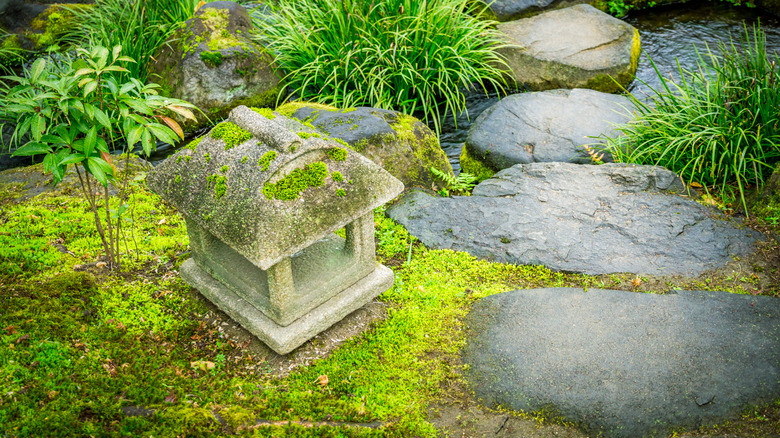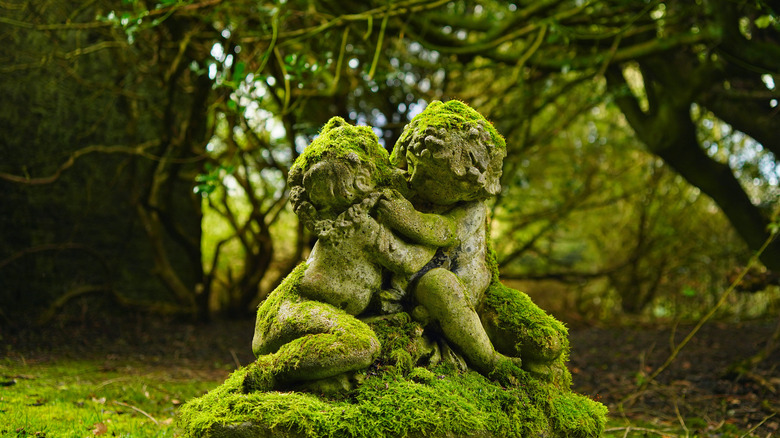This TikTok Gardener Makes Growing Moss Look So Easy, But Does It Work?
I love moss, and have seen some gorgeous moss gardens. These moss gardens are beautiful, textured, and have a fairy-like quality. There is a TikTok gardener who suggests a basic way to create a moss garden by adding moss from one location to an already-established moss area. Is it really this easy? The answer depends on several factors, but I have some suggestions for several approaches to creating a moss garden, in addition to the tips offered in this gardener's video.
Creating a moss garden is a somewhat straightforward process, but it's not always easy, as the moss can be somewhat temperamental about regrowing in a new location. That said, there are some tricks to growing moss and creating moss gardens that might work for you. The most obvious approach is the one suggested in the TikTok video, where you simply create a garden from an already-established patch of moss. You can also, as suggested, dig up moss from one location to add to another.
Using a mossy location that already exists for your moss garden ensures that the moss growing there has already found its proper balance of shade, water, and rich, well-draining soil to keep it thriving. Moss is not exactly "fussy," but it tends to grow where the conditions are suitable for its long-term survival. Usually these garden locations are shady, or have dappled sunlight, with moist but not wet soil conditions. Creating a new moss garden location means re-creating these conditions as closely as possible.
Best locations, conditions, and care for moss gardens
If you want to start a new moss garden, you will need to start with creating a suitable environment for moss to grow. If there is moss growing nearby, that is a good sign that the conditions might already be viable. Moss absorbs moisture readily, so it thrives in spots that tend to stay fairly moist, but it won't usually grow in spots that retain standing water after a rainstorm. Moss also won't usually grow in hard clay soils, as it requires good drainage to stay healthy.
Most varieties of moss seem to prefer slightly-acidic soils. Organic matter often adds a bit of acidity to soil, so if you're planting some moss in a new spot, adding a bit of compost can help give it a good start. You could also add some peat moss or used coffee grounds to the soil improve acidity and moisture absorption, as well as helping soil drainage.
Once your new pieces of moss are added to an existing moss area, be sure to water them lightly but consistently until the new patches of moss are established. If you have a dry spell, moss might need a bit of extra watering to thrive. The moss bed will tell you if it needs some water, because the soil around it will appear very dry, and may lighten in color or start to look sandy or dusty.
Creating moss-covered garden objects
Another way to create a moss garden look is with moss-covered objects. There's a method for "making" your own moss that allows you to grow moss on natural surfaces such as stone or wood, like garden statues. This method is also effective for adding moss to walkways, pavers, and stones used for garden edging. This project requires some moss, a blender, some buttermilk or yogurt, and a paintbrush. The buttermilk or yogurt acts as a medium for growing the moss.
The directions are simple: add pieces of moss (cut into small chunks) to buttermilk or yogurt in the blender, and blend gently until you have a sort of chunky soup (add water if necessary). Pour the mixture over the object (or the walkway or pavers), or apply with a paintbrush to the surface. You can repeat this over the course of several days if you wish. As moss starts to grow, mist it lightly with the mist attachment on your hose to keep it moist while it gets established.
Moss can really add beautiful texture to a shade garden, along with shade-loving flowering plants such as coral bells, forget-me-nots, sweet woodruff, and pulmonaria. As your moss garden grows, consider adding different textures and colors of moss to create a sort of tapestry effect. Once established, your moss garden will last for years with minimal care beyond watering.

